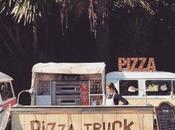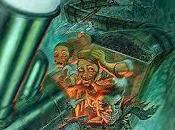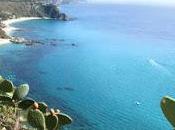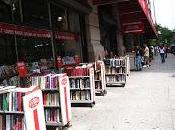Mentre Iron Man 3 continua a riscuotere grande successo nelle sale di tutto il mondo, frantumando i record di incasso, vi presentiamo in esclusiva una intervista a Bryan Grill, supervisore agli effetti speciali per la Scanline VFX, il quale si è occupato di realizzare una tra le sequenze di maggiore impatto della pellicola diretta da Shane Black, ovvero quella in cui la villa di Tony Stark viene attaccata e completamente distrutta. Bryan Grill ha lavorato nella sua carriera a numerose pellicole, tra cui sono da ricordare Titanic, The Time Machine, The Day After Tomorrow – L’alba del giorno dopo, Star Trek: La nemesi e The Avengers.
Puoi parlarci della ScanlineVFX?
La sede di Los Angeles della Scanline è stata aperta nel 2007 da Danielle Plantec e Stephan Trojanky, entrambi della sede di Monaco. Uno dei primi lavori che abbiamo avuto sono state alcune scene di 300 e poco dopo abbiamo lavorato a 2012 di Roland Emmerich realizzando qualche concept per l’acqua e qualche ripresa d’impatto come la gigantesca onda che allaga l’Himalaya. Io sono arrivato alla Scanline in quel periodo. In seguito abbiamo lavorato a I viaggi Di Gulliver che ho supervisionato io e a Hereafter di Clint Eastwood, dove ho lavorato con Micheal Owen, che per quel film è stato nominato all’oscar per i migliori effetti speciali. E’ stato strano realizzare un film su di un evento come lo tsunami… Dopodichè abbiamo lavorato a Super 8, The Avengers e ora stiamo lavorando al sequel di 300.

Hai anticipato una delle nostre domande, quella sui progetti futuri.
Sì, stiamo lavorando al sequel di 300 e io sto lavorando, sempre con la Marvel, al sequel di Captain America. Scanline sta poi lavorando anche a Man Of Steel: io ho amato il primo superman e vi assicuro che questo film non deluderà i fan!
Quando hai iniziato a lavorare su Iron Man 3?
Penso che fosse a gennaio 2012, 13 mesi fa. Abbiamo fatto alcuni test verso la fine del 2011 e abbiamo avuto ufficialmente il via per lavorare con la Marvel nel gennaio 2012!
Puoi descriverci il tuo lavoro come supervisore degli effetti speciali?
Quando siamo sul set a girare generalmente ci sia alza DAVVERO presto e si va a dormire MOLTO tardi. Quando torno alla Scanline dove ci sono 250 artisti al lavoro in sedi diverse (Monaco, Vancouver e Los Angeles) ogni giorno ci si sveglia e ci sono già dei render sulla scrivania da controllare, poi un production meeting dove si pianificano il lavoro giornaliero e settimanale. Ogni tanto controlliamo il lavoro di Los Angeles, ogni tanto quello di Vancouver e il tutto si ripete fino a dopo pranzo. Quando mi siedo alla mia scrivania nel mio tempo libero dal set faccio comunque qualche lavoro… Mi piace comporre musica e resto in contatto con il lavoro degli altri e controllo che il lavoro che stiamo dando al committente sia esattamente ciò che vuole.
Nelle prime fasi di lavoro ogni tanto si finisce per mangiare alla propria scrivania in serata, ci sono momenti il cui il tempo vola!

Quali sono state le sequenze del film alle quali avete lavorato e quali le difficoltà in cui vi siete imabattuti?
La scena principale sulla quale abbiamo lavorato è quella dell’attacco alla casa e grosso modo a tutte le cose ad essa collegate: 200 shots della singola scena più altri 250, praticamente ogni scena a Point Dume prima e dopo la distruzione.
Le maggiori difficoltà le abbiamo avute per le scene girate all’esterno: abbiamo dovuto cambiare la forma della scogliera, per fare in modo che la casa potesse cadere in un determinato modo. Point Dume è un parco in California e non ci sono case, quindi abbiamo dovuto costruire la villa e i dintorni ed è stato un lavoro enorme.
Abbiamo girato scene sia lontane con un elicottero che ravvicinate in modo da avere immagini dell’ambiente da qualsiasi angolazione nel caso avessimo dovuto aggiungere altre scene durante la produzione.
Abbiamo costruito gli interni (la sala ed il garage) in North Carolina. Nell ultimo ¼ della scena abbiamo un Iron Man che sta annegando sul fondo dell’oceano con il garage che gli sta crollando addosso e come se non bastasse l’armatura non funziona a dovere.
Con le sue ultime forze fa in modo che il guanto della MK42 lo trascini fuori dall’acqua in modo che lui possa volare via. Succede tutto molto in fretta nel film, ma abbiamo trascorso moltissimo tempo su quella scena. E’ bellissima ma la prima volta che l’ho vista il mio cuore si è fermato per un attimo! (risate) Ma quando lavori su qualcosa di così bello con degli artisti così di talento la sola cosa che conta è il viaggio fatto insieme e aver fatto del proprio meglio, non la scena in sé.
Quali tecnologie avete usato nel girare queste scene?
Scanline è famosa per i software usati per l’acqua, come in 2012. Fumo, fuoco, gas… tutto ciò che serve per rendere una simulazione realistica: dai gas ai fluidi. Abbiamo usato 3DS Max per delle simulazioni particolari Maya per le animazioni e ovviamente Nuke. Abbiamo un composing department molto talentuoso e credo che questo sia uno dei motivi per cui siamo stati scelti per una scena difficile come quella di Point Dume. Ho lavorato alla Digital Domain per 14 anni e sono sempre stato orgoglioso di lavorare per un’azienda che riesce a far bene scene che altre non possono fare e essere parte della Scanline per me è un vero onore. Scanline è una delle poche aziende (insieme a Digital Domain) che seppur piccole possono riuscire con successo in lavori grossi come queste scene di distruzione.

Potresti descriverci passo passo la realizzazione di una scena?
Perfetto! Prendiamo come esempio la scena della distruzione della villa. Fondamentalmente il nostro lavoro per Iron Man 3 si ritrova in gran parte nella scena dell’attacco alla casa di Stark, dove abbiamo Tony, Pepper e Maya che stanno parlando nella sala fino a che, dal nulla, sbucano degli elicotteri che in apparenza sembrano appartenere a testate giornalistiche, ma che portano dell’artiglieria pesante. Abbiamo quindi dovuto fare il design delle varie armi e fonderle con quello degli elicotteri.
Abbiamo una scena d’apertura con gli elicotteri che si avvicinano alla villa a Point Dume e sparano dei missili. Il primo missile fondamentalmente sbalza in aria Pepper e Tony e quest’ultimo, per proteggerla, ha modificato l’armatura MK42 in modo da poterla controllare a distanza.
L’intera scena si svolge in slow motion ed è stata girata con il green screen; abbiamo dovuto animare ogni singolo pezzo di armatura, aggiungere il fondale e, parte molto divertente, aggiungere fumo e detriti e farli interagire con i protagonisti come se stessero permanentemente fluttuando in questa esplosione.
Poco prima che Pepper si schianti contro il muro l’armatura la riveste completamente ed è proprio lei a proteggere Tony dal crollo del soffitto. Questa è la prima scena dove vediamo Pepper proteggere Tony, leit motiv del film che potrebbe lasciar presagire anche un futuro da supereroina per miss Potts.
Non appena Pepper è al sicuro dentro la MK42 Tony ordina alle due di andar fuori dalla villa, Pepper ovviamente esegue gli ordini, riuscendo all’ultimo secondo a salvarsi insieme a Maya.
Questa scena è stata divertente da girare perché avevamo uno stunt con indosso mezza armatura e noi abbiamo dovuto sostituirlo con un Iron Man (da noi amichevolmente chiamato “Iron Pepper”) realizzato interamente in CGI. Un animazione davvero, davvero, complicata.
Nel mentre comunque la casa sta sempre crollando e quindi dobbiamo mostrare l’interazione con il background, ad esempio mentre Tony sta cadendo senza armatura e i detriti lo colpiscono alla spalla, tutti questi dettagli sono stati aggiunti con effetti speciali.
Gli elicotteri iniziano a sparare con mitragliatrici e Tony è costretto a richiamare l’armatura da Pepper, ormai salva al di fuori della casa con Maya, Questa scena è stata molto complicata per la mole di cose su schermo: pezzi di armatura, pezzi di villa, detriti, proiettili, mitragliatrici… Così tante cose tutte insieme!
Quando l’armatura è finalmente indosso a Tony possiamo vedere un Iron Man che sembra dire “avete avuto il vostro momento, ragazzi, ora tocca a me!” Tutto ciò che sta accadendo ora su schermo è interamente realizzato in CGI, ovviamente.
La parte principale di questa sequenza è che la tuta è malfunzionante e quindi Tony è costretto a lanciare indietro missili da solo e ad usare un pianoforte come arma contro gli aerei! Scena molto divertente, anche perché abbiamo apportato dei cambiamenti: al posto del pianoforte doveva esserci un esplosione causata da una palla di fuoco!
Una volta tirato giù il secondo elicottero il pavimento crolla e possiamo finalmente vedere il garage, set interessante perché costruito su di un giunto cardanico, un piano capace di inclinarsi.
Abbiamo girato la scena “pulita” ed aggiunto in un secondo momento i vari effetti di sbalzo, i detriti e dato la giusta gravità e fisica agli oggetti: abbiamo dovuto far ballare i lucernari in quanto erano fissi al soffitto e gettare nelle profondità dell’oceano molte auto tra cui una bellissima Bugatti che abbiamo anche distrutto.
Tutto l’ambiente oceanico in cui Tony si ritrova intrappolato è interessante perche è interamente realizzato in CG e abbiamo tentato di renderlo il più realistico possibile, ci siamo spinti al limite per dare alla Marvel ciò che volevano e dare la giusta fisica ad ogni oggetto sommerso ci ha portato via molto tempo.
Anche la visibilità è importante: sott’acqua l’orizzonte non è lontano e la vista è distorta. Qui inoltre abbiamo robots, tavoli, auto, sabbia… Abbiamo usato ogni fonte di luce ed oscurità per dare i giusti effetti di ombra. Non si vedono textures, si vedono sagome. C’è caos, abbiamo voluto rendere la scena come se la si stesse guardando attraverso un acquario sporco.
La cosa bella delle scene subacquee è che sono davvero MOLTO semplici da rendere belle, come i fondali dei carabi, ma qui dovevano essere sporche, scure, spaventose. Realistiche.
Abbiamo aggiunto talmente tante cose in quella scena che a volte non si riescono a vedere ma si possono percepire. Alcuni artisti si sono lamentati che gli oggetti che avevano aggiunto non si vedevano, ma ehi! E’ proprio questo il bello. La sensazione che ti da la scena: più dettagli ci sono, e anche se l’occhio non li vede il cervello li percepisce.
Usando un esempio, lo sporco sullo schermo del computer: lo si pulisce con il dito e sembra tornare pulito, ma appena si spegne il PC si vede la ditata. Era li anche prima, solo non la si vedeva. E’ questa qualità che rende le cose realistiche.

I Marvel Studios vi hanno dato indicazioni per la realizzazione del film?
Certo, ci hanno detto “Fatelo spettacolare, fatelo realistico!” (ride). Durante tutto il processo realizzativo abbiamo mostrato le nostre scene passo passo e ci dicevano cosa piaceva e cosa no, cosa aggiungere e cosa togliere. Interagire con chi porterà il film sullo schermo e a cui spettano le decisioni finali sul film è stato utile.
Hai lavorato anche su Avengers. Che differenze ci sono state, se ci sono state, nel tipo di lavoro svolto rispetto ad Iron Man 3?
Il lavoro è stato nettamente differente: per The Avengers abbiamo girato 50 scene e la meta erano aggiunte di CGI.
In sostanza abbiamo fatto le simulazioni dell’eliveivolo, di quando si solleva in aria, dovevamo farlo sembrare enorme, muovere l’acqua di conseguenza… solo quella è stata la maggior parte del lavoro. Per Iron Man 3 avevamo a disposizione diversi set per una singola ambientazione, tutto l’ambiente circostante. C’era simulazione sì, ma anche più distruzione ed effetti ambientali di acqua, fumo ecc.
Inoltre non animavamo soltanto Iron Man come personaggio, ma anche ogni singolo pezzo dell’armatura, quindi abbiamo avuto una mole di lavoro maggiore per Iron Man 3.
Grazie mille per quest’intervista, i 45 minuti sono davvero volati!
Grazie a voi!
ENGLISH VERSION
Can you talk us about ScanlineVFX?
The L.A. Scanline was started in 2007 by Danielle Plantec and Stephan Trojansky, who both came from the Munich faciltity and one on the first jobs here was doing some shots on 300 and then soon after that we start working on Roland Emmerich’s 2012 doing some concept works of the water and some big shots of the wave coming over the Himalaya. That’s where I joined Scanline. After that we worked on Gulliver’s travel which I was supervising and on Clint’s Eastwood’s Hereafter, I worked with Micheal Owen. When I came down doing a movie about the Tsunami it was kind of ambiguous… Micheal Owen was nominated for Visual Effect Oscar for that movie. After that we worked on Super 8, Avengers and now we’re working on the sequel of 300.
You anticipated one of our question abut your next projects…
Yes, we’re working on the sequel of 300 and I’m working, always with Marvel, on the sequel of Captain America. Scanline is working on Man of steel too. That’s a big one, I loved the first Superman movie and this one won’t disappoint the fans.
When did you start working on Iron Man 3?
I think it was January 2012, 13 months ago. We made some test on late 2011 and we officially had the award to work with Marvel on January 2012, that’s it!
Can you describe your daily routine as a VFX Supervisior?
When your set and you’re shooting you usually get up REALLY early and you go to bed VERY late, but when I’m back here in Scanline where you’ve 250 artists working on different facilities (Munich, L.A. and Vancouver) it ‘s really about every day you get up and you look on renders on the desk, and then we have a production meeting and we talk about the day and thee week, about what we’re trying to get done. Sometimes we do L.A daylies, sometimes we make Vancouver daylies and then another round of walkthrough after lunch, and then another round of dailies… Then I sit on my desk and on my free time I do some work that I need to do either… I like composing tracks and I keep in touch on what everybody’s doing, and the planning and dealing on what the client needs and make sure that we’re delivering great looking work.
At the beginning sometimes you end up eating at the your desk, some times time really runs out!

Which are the main sequences of the movie you worked on and which were the biggest difficulties you encountered during the making of the movie?
Well the sequence we worked on was the “house attack” sequence and pretty much any other shot on that environment, about 200 shot on the house attack sequence and then we did overall other 250 shots. We almost did every sequence at Point Dume before and after the destruction. The biggest thing on the house attack sequence was the exterior shots : we had to change the shape of the cliff where the house is, to make the house fall more directly. Point Dume is a park in California, so there’s no home and we had to complete fabricate his mansion and the thereabouts so it became big to do. We had shots faraway from the helicopter but close-ups too, We had to do the environment at any resolution to have a complete situation so that we had the possibility to add some shots even at the middle of the production. We built the interiors, the living room set and the garage set, in North Carolina. In the last ¼ of the sequence we found Iron Man down in the ocean with the garage falling on him while the suit is having malfunction. His last attempt is using the gauntlet of the suit In order to pull him out of the water and then he only has the strength to go away with his armor. It all happens very fast in the movie, but we spent so many time on that scene… It looks great but when I first saw that my heart was pounding at the end! Now you understand what I sad about eating at my desk! (LAUGHS) But when you’re working on something really cool and with many talented artist the only thing that matters is the journey you make together and doing your best, not the scene itself.
Which technologies and programs did you use for this scenes?
Scanline is famous for the water softwares, such the one we used in 2012. Smoke, fire, gas… Anything that is a real world simulation: gas, fluid and anything in between. We also used 3DS Max for particular simulations, we used Maya for animation and of course we used nuke. We have a very talented composing department and I think this is one of the reasons we were called for a hard scene like the Point Dume one. I worked in Digital Domain for 14 years and I’ve always been proud of being part of a facility that can do what others can’t and being part of Scanline is really an honor to me. Scanline is one of the facilities, even tough we’re small, that can take on these big destruction scenes (with Digital Domain, obviously).
Shall you describe us the main steps of your work, from the beginning to the end?
Ok, let’s take the Point Dume scene as an example. Basically the work on Iron Man 3 is mostly on the “House Attack Sequence” where we have Tony, Pepper and Maya talking on the living room and then, out of nowhere, we have 3 helicopters that look like news helicopters but they seem to be packing some heavy artilley.
So we have to design the artillery and attach that to the helicopters. We have an opening shot of the helicopeters approaching the mansion in Point Dume and then shooting missiles. The 1st missile basically blowns back Tony and Pepper and in order for Tony to proctect Pepper there’s a new tech for the Iron Man MK42 suit that allows him to control it in remote and the suit attaches to Pepper.
The whole sequence happens in slow motion, so it was shot on green screen and we have to animate the single pieces of the armor, and put the background behind them. The fun part was adding the smoke and the debris and then interacting with Pepper and Tony as if they were completely flowing in this explosion. Right before Pepper slams into the wall the suit is completely connected to her and she ends up protecting Tony as the roof of his mansion starts collapsing. Thats the first kind of scene where she’s protecting Tony, because in the rest of the movie is about Pepper’s role or maybe a future role being a superhero maybe…

As soon as Pepper has the suit Tony is kind of “Get outta here” so the two run out and here’s the helicopters send another missile and the house cracks and the floor drops, at this point Pepper narrowly escapes, grabbing Maya. This was a fun scene because we had a stunt in a kind of half suit and we pretty much have to make a full CG Iron Man (or what we called “Iron Pepper”) and interact with Maya. We had to remove the stunt person and replace him with a full CG Iron Man and it was a hell of a tricky animation.
The house is still falling too, so we have them to interact with the environment too, for example when Tony’s without the armor we have pieces of debris hitting his shoulders and these were all things added with VFX.
Helicopters start shooting with machinguns and Tony summons the suit back to him to protect himself because it’s raining bullets (and Pepper and Maya are safely outside the house).
So we have the suit leaving Pepper and coming up on Tony. This one was very intricate becasuse of what’s happening aound them: pieces of armour, smoke, debris, mashinguns, bulletts… So many things all together!
When the suit finally gets together we see Iron Man standing and it’s kind of “Ok, guys, now’s your turn!”, a very strong and powerful image.
Everything that is crashing and falling around (because of the bullets, because of the armor, becasuse of the debris) was done in CG so we did a fair amount of reconstruction and destruction…
One of the main part is when the suit reconnects and we’ve all this debris and glass and he’s kind of trapped in this malfunctioning suit and he have to manually open it and he has throw the missile himslef, or throwing the piano to the helicopter… This was a pretty fun scene, there’s no explosion, but it was pretty fun to do, even because we changed this scene: instead of the piano there should have been a fireball!
After Tony gets down the second helicopter, that crashes into the mansion and here we can see the garage, which is interesting because is builted on a gimbal, a flat able to inclinate.
We shoot the scene clean and then we gave the sense of tilting and adding debis and giving them the proper gravity: we added the tilting effect to the lamps (they where fixed), we had cars falling out, a beautiful Bugatti taht we smashed and trew underwater.
When the house goes underwater Tony finds himself trapped on the bottom of the ocean. That whole environment is intereting because it’s all made of CG and it was really important to have the scene as more realistic as possibile. We pushed us very hard to give Marvel what they wanted and it took a while toh ave the actual physics of every object we were moving.
The visibilityly too: usually underwater you don’t see very far, and here we have all the robots, desks, cars, sand, dirt… What we endend up doing was using every source of light and shadows to gave sense of shades. You don’t see the textures, you see shapes. There’s chaos, we wanted to give the sense of the scene as if you were looking trough a dirty aquarium…
We started adding stuff, giving the sense of being underwater.
The big thing of doing CG scenes underwater is that is SO easy to make them look beatiful like the carribean, but this one needed to be dark and dirt, real, you know.
One of the cool thing is that there were so many elements that we added, so many things underwater that sometimes you don’t even see them but you feel them.
Some of the artists were complaing because the elements they added weren’t visibile, but you know, that’s the beauty of it! It’s the feeling of the scene: the more of the details there are, even if you don’t see them, your brain feels them.
For example, the dirt on the computer screen: you clean it with your finger and it seems clean, but when you turn out the computer you find the fingerprint. It was there even before, but you couldn’t see it!
It’s that quality that makes things real.
Did Marvel Studios give you some hints during your collaboration?
They said: “Make it look great, make it look real”. (LAUGHS) All through the process we showed our scenes and they told us what they like and dislike, what to add and what to expunge. Interacting with everybody who woluld actually be touching and bringing the final look to the sceen was a great thing!
You worked on Avengers too. Was there a different approach to that movie in comparison with Iron Man 3?
The work was definetly different: on Avengers we did maybe 50 shots: half the shots were CG extensions.
We basically did a simulation of when the Helicarriers lifts up and we tried to make the helicarrier feel huge, we moved the water, and the that alone was a big part of the work. In Iron Man 3 we had multiple set even for one single mansion, the environment… We had simulation too, but even more destruction, water, smoke effects ecc.
Even we’re not animating only Iron Man as a character but even every single piece of the suit, so we definitely had more work on Iron Man 3!
Thank you so much for this interview, this 45 minutes really flew!
Thank you!
La squadra degli effetti visivi di Iron Man 3
VFX Supervisors:*
Bryan Grill
Darren Poe
Stephan Trojansky
*VFX Producer:*
Robert Evans
*VFX Consultant:*
Danielle Plantec
*Compositing Supervisor:*
Stefano Trivelli
*CG Supervisors:*
Paul Ghezzo
Justin Mitchell
*VFX Associate Producer
Paul Kolsanoff
*Animation Supervisor:*
Bernd Angerer
Etichette associate:
Iron Man 3In EvidenzaBryan GrillCondividi:
Seguici su:






